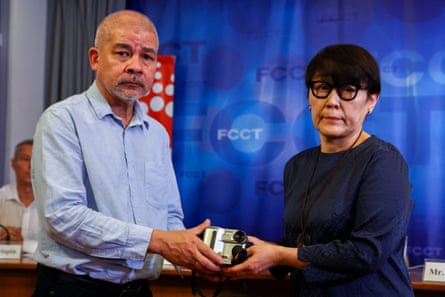The family of a Japanese journalist killed while reporting on Myanmar’s 2007 Saffron Revolution have released his last pictures, sharing footage from a recently obtained video camera missing since his fatal shooting 15 years ago.
The final pictures from 50-year-old Kenji Nagai during an anti-government protest were obtained by Myanmar-focused news outlet the Democratic Voice of Burma (DVB), which returned the camera on Wednesday to Nagai’s family in Bangkok.
Myanmar security forces arrested thousands of people during the monk-led demonstrations in what was one of the biggest uprisings in decades against military rule. At least 31 people were killed.
In the video, Nagai captures images of protesters in the commercial capital Yangon and the arrival of a truck full of soldiers, before turning the lens on himself to record a piece to camera.
His sister, Noriko Ogawa, said she hoped his video could raise awareness about the current violence in Myanmar, which was triggered by the military when it took back power in a 2021 coup after a decade of tentative democracy.
“Through this, I hope that people will once again turn their attention to Myanmar and I hope that people around the world will feel that something should be done about the current situation,” Ogawa told media in Bangkok.

She said the camera and footage would go back to Japan to be analysed and support a thorough investigation into her late brother’s death, a case that had gone cold.
Aye Chan Naing, DVB’s cofounder, declined to say how the organisation obtained Nagai’s camera, to ensure the safety of those involved.
Nagai was shot when the military opened fire on protesters. Widely seen footage smuggled out of Myanmar in 2007 showed a soldier aiming a rifle near Nagai, who falls backwards on the road. A Reuters photographer captured an image of Nagai on the ground.
At the time, Myanmar authorities said he was shot accidentally and Japan’s government said it could not conclude that he was killed at point-blank range.
“We would like for the truth to be clarified and to be made known, that is how we feel,” Ogawa added.

